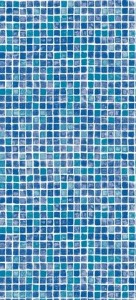Have you noticed in recent years the trend here in Australia and New Zealand toward an increased life span of (locally made) inground and above ground pool liners?
Does it make you also wonder, “How long should they last”?
In the past few years, large numbers of medium and large sized above ground liners have been imported from China and sold into our local market. And, it shouldn’t be too long now till we see how well they really perform in our harsh climate! As an educated guess, it’s likely they won’t last anywhere near as long as the Australian made liners.
I’m sure consumers are happy with many, many years of use from a locally made liner, but does this limit the opportunity for pool owners to update their pool look because the liner lasts so long? If my car exterior and interior looked as good after 10 years as it did the day I purchased it, I would be less likely to update it every 4 years. But as I drive it each day, the carpet looks a bit worn and the door trims have those scuff marks from the bottom of my shoes. You get the little dents and scratches on the doors from parking at the shopping centre and so you decide its time to upgrade.
This poses the question, “Would a pool owner be happier with a “new look” to their pool more often”?
Would they like to update the look of their pool to match current trends, as often as they change their furniture or paint their house? Or are pool owners deterred from updating their pool because there is plenty of life left in their pool liner and so they opt out because the current one is still doing the job?
My view is that you should expect a pool liner to last around 8-10 years for an Above Ground pool and 12-15 years for an Inground Pool Liner – but I know from experience that many last much longer. What do you think? How long should an Above Ground Liner last? How long should an Inground Pool Liner last?
Message me your thoughts…





